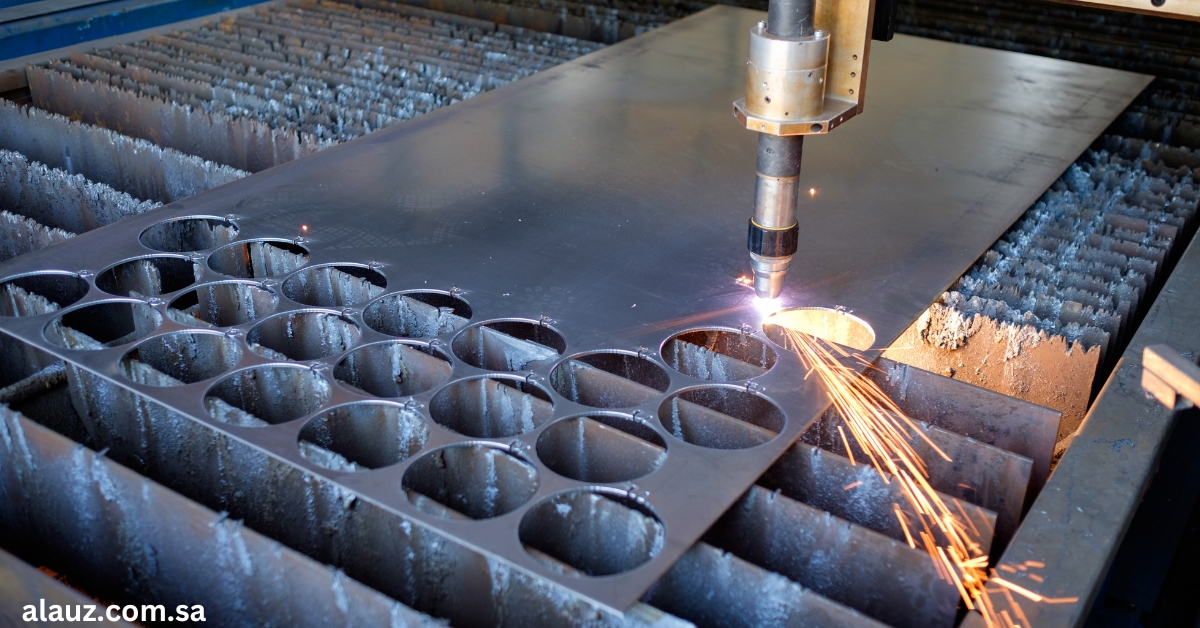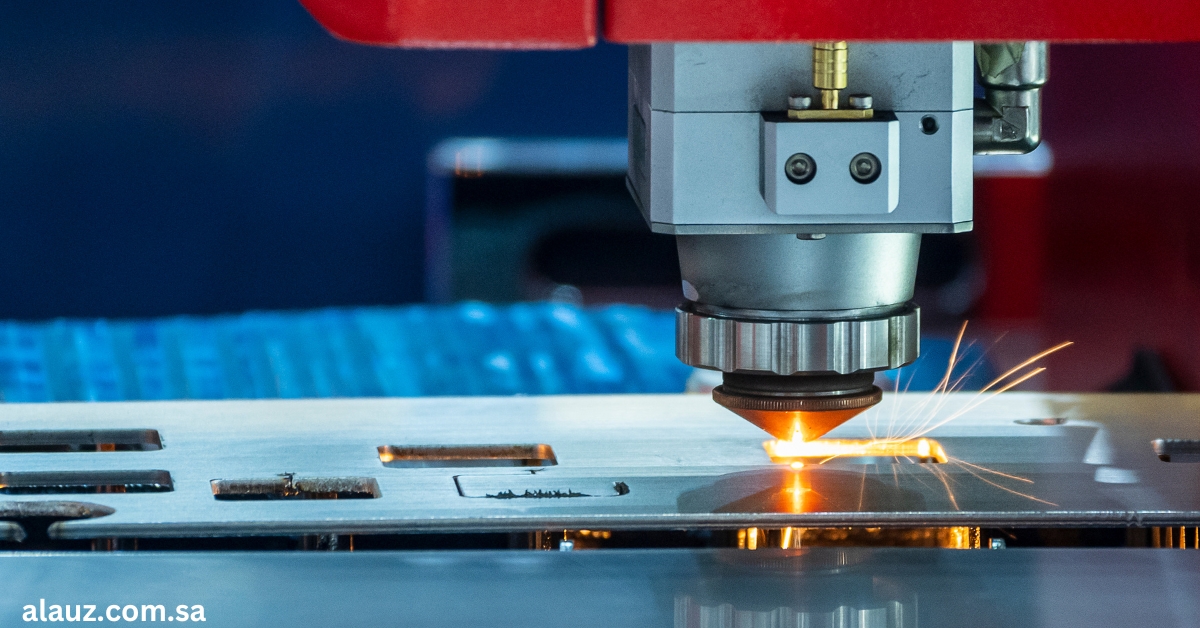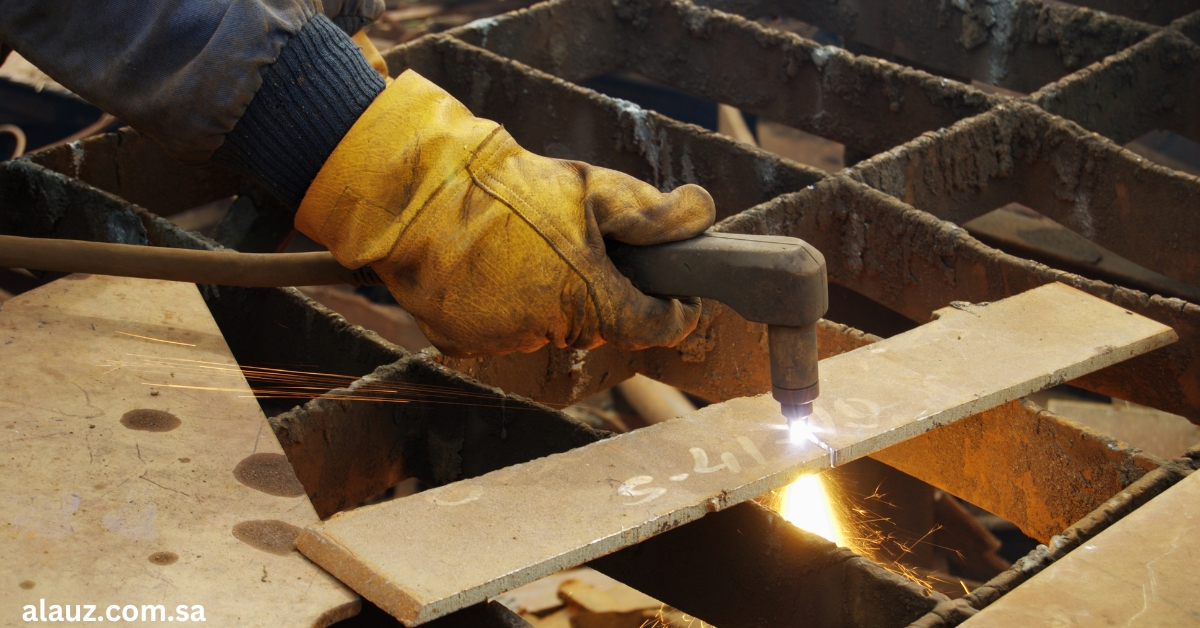Plasma cutting is a highly efficient method used to cut through electrically conductive materials, such as metals, by means of an accelerated jet of hot plasma.
In this blog article, we will explore about the working principles of plasma cutting machines, their components, advantages, applications, and considerations for users.
What is Plasma Cutting?
Plasma cutting is a thermal cutting process that utilizes ionized gases to melt and remove material from a workpiece. The process involves creating a plasma arc, which is a stream of ionized gas that reaches extremely high temperatures—often exceeding 20,000°C (36,032°F). This intense heat allows the plasma cutter to slice through various metals with precision and speed.
How Does a Plasma Cutter Work?
The operation of a plasma cutter can be broken down into several key stages:
- Gas Ionization: A plasma cutter uses compressed air or other gases (such as nitrogen or argon) that are ionized to create plasma. The gas is forced through a nozzle at high speed.
- Creating the Arc: An electric arc is established between an electrode and the nozzle. This arc ionizes the gas, forming a conductive channel.
- Plasma Formation: The ionized gas becomes plasma as it exits the nozzle. The constriction of the nozzle increases the velocity and temperature of the gas.
- Cutting Action: When the plasma jet contacts the workpiece, it melts the metal. The high-velocity gas simultaneously blows away the molten metal, effectively cutting through the material.
Components of a Plasma Cutting Machine
Understanding the components of a plasma cutting machine helps in grasping how it functions:
- Power Supply: Provides the necessary electrical energy to create the arc.
- Plasma Torch: Contains the electrode and nozzle through which the gas flows and forms plasma.
- Gases: Typically air or inert gases like nitrogen or argon are used depending on the material being cut.
- Ground Clamp: Connects the workpiece to ground, completing the electrical circuit needed for cutting.
Table 1: Key Components of Plasma Cutters
| Component | Function |
|---|---|
| Power Supply | Supplies electrical energy for arc generation |
| Plasma Torch | Houses electrode and nozzle; creates and directs plasma |
| Gases | Provides medium for ionization and cutting |
| Ground Clamp | Completes circuit for effective cutting |
Types of Plasma Cutting Processes
There are several methods employed in plasma cutting, each with its specific applications:
- High-Frequency Start: Uses a high-voltage spark to initiate the arc when the torch touches the metal. This method can interfere with CNC equipment.
- Pilot Arc Start: Generates a small pilot arc within the torch before transferring it to the workpiece. This method is preferred for CNC applications due to its reliability.
- Contact Start: Involves touching the torch to the workpiece to create an arc. This method is less common in automated systems.
Advantages of Plasma Cutting
Plasma cutting offers numerous benefits over traditional cutting methods:
- Speed: Plasma cutters operate significantly faster than laser or oxy-fuel cutting methods—up to 100 times faster than laser cutting.
- Precision: The process allows for high precision and repeatability, producing clean cuts with minimal finishing required.
- Versatility: Capable of cutting various conductive materials such as steel, aluminum, brass, and copper.
- Cost-Effectiveness: Generally lower operational costs compared to other cutting methods due to reduced time and labor requirements.
Applications of Plasma Cutting
Plasma cutters are widely used across various industries due to their versatility:
- Fabrication Shops: For creating parts and components from metal sheets.
- Automotive Repair: Used in bodywork and frame repairs.
- Industrial Construction: For structural steel fabrication.
- Salvage Operations: Efficiently cuts scrap metals for recycling.
Considerations When Using Plasma Cutters
While plasma cutting machines offer many advantages, there are also considerations users should keep in mind:
- Material Thickness: Different plasma cutters have varying capabilities regarding material thickness. Selecting an appropriate machine for specific tasks is crucial.
- Safety Precautions: Operators must wear protective gear due to intense light and heat generated during cutting.
- Maintenance Needs: Regular maintenance of consumable parts like nozzles and electrodes is essential for optimal performance.
Table 2: Considerations in Plasma Cutting
| Consideration | Details |
|---|---|
| Material Thickness | Choose machines based on thickness capabilities |
| Safety Precautions | Use protective gear (gloves, goggles) during operation |
| Maintenance | Regularly check and replace consumable parts |
Future Trends in Plasma Cutting Technology
With advancements in technology, plasma cutting continues to evolve:
- CNC Integration: Modern CNC machines enhance precision and automate complex cuts without manual intervention.
- Improved Nozzle Designs: Newer models feature smaller nozzles that produce thinner plasma arcs for near-laser precision cuts.
- Increased Automation: Automation technology reduces human error and increases production efficiency in industrial settings.
Plasma cutting machines represent a significant advancement in metal fabrication technology. By understanding how they work, their components, advantages, applications, and considerations, users can effectively leverage this powerful tool in various industrial contexts.
As technology continues to evolve, plasma cutting will likely become even more integral to modern manufacturing processes.
What are the main advantages of using a plasma cutting machine?
Plasma cutting technology has revolutionized the metal fabrication industry by offering a range of benefits over traditional cutting methods. This article explores the main advantages of using plasma cutting machines, highlighting their versatility, speed, precision, cost-effectiveness, and more.
1. Versatility
One of the standout features of plasma cutting machines is their ability to cut through a wide variety of electrically conductive materials. This includes:
- Steel
- Aluminum
- Copper
- Brass
- Stainless steel
Plasma cutting can also handle different thicknesses and types of metal, making it suitable for various applications, from intricate designs to heavy-duty industrial tasks. Unlike other methods, such as oxy-fuel cutting, plasma cutting can effectively slice through multiple layers of material stacked together, enhancing its utility in complex projects.
2. Speed and Efficiency
Plasma cutting is renowned for its speed. It can operate significantly faster than traditional cutting methods, completing jobs in a fraction of the time. For instance:
- Plasma cutters can cut materials up to two times faster than oxy-fuel systems, especially for thinner metals.
- The process does not require preheating, allowing for immediate cutting once the machine is set up.
This efficiency translates to higher productivity levels in manufacturing environments, enabling businesses to meet tight deadlines with ease.
3. Precision and Quality of Cuts
Precision is critical in metal fabrication, and plasma cutting excels in this area. The technology produces clean and sharp cuts with minimal kerf (the width of the cut), which reduces material wastage. Key points include:
- Plasma cutters can follow intricate patterns and shapes with high accuracy, making them ideal for detailed work.
- The quality of cuts often eliminates the need for extensive finishing processes, such as grinding or deburring, saving time and labor costs.
4. Cost-Effectiveness
Using plasma cutting machines can lead to significant cost savings in several ways:
- Reduced Labor Costs: Faster cutting speeds mean less time spent on each job, which lowers labor expenses.
- Lower Material Waste: The precision of plasma cutting minimizes scrap material, maximizing the use of resources.
- Lower Operational Costs: Plasma cutters primarily use electricity and compressed air, which are generally cheaper than the gases required for oxy-fuel cutting. This ongoing cost advantage is particularly beneficial in high-volume production settings.
5. Ease of Use
Plasma cutters are designed to be user-friendly. Their portability allows operators to move them easily between different job sites or workstations. Additionally:
- Many plasma cutting machines are lightweight and can be operated by a single person.
- Training new operators is relatively straightforward due to the intuitive nature of the equipment.
This accessibility makes plasma cutting an attractive option for both professional fabricators and hobbyists alike.
6. Energy Efficiency
Compared to traditional cutting methods like oxy-fuel or laser cutting, plasma cutting is more energy-efficient. It requires less energy per cut while maintaining high performance levels. This efficiency not only reduces operational costs but also supports sustainability efforts within manufacturing processes.
7. Capability to Cut Complex Shapes
Plasma cutters are capable of producing intricate designs that would be challenging with other methods. They can easily create:
- Straight lines
- Curves
- Complex geometric shapes
This capability opens up new possibilities for artistic and functional metalwork projects.
8. Safety Features
Plasma cutting machines are generally safer than oxy-fuel systems due to their reliance on inert gases during operation. This reduces risks associated with flammable gases and potential explosions. Furthermore:
- Operators face less risk of injury due to the precision and control offered by plasma cutters.
- The process generates less heat in surrounding areas compared to flame-based methods, reducing the likelihood of heat-related accidents.
The advantages of using a plasma cutting machine make it an essential tool in modern metal fabrication. Its versatility, speed, precision, cost-effectiveness, ease of use, energy efficiency, ability to cut complex shapes, and enhanced safety features contribute to its growing popularity across various industries.
How does plasma cutting improve productivity in metal fabrication?
Plasma cutting technology has become a cornerstone in the metal fabrication industry, significantly enhancing productivity through its speed, precision, versatility, and cost-effectiveness. Below we will explore the various ways plasma cutting machines improve productivity in metal fabrication processes.
1. High Cutting Speed
One of the most significant advantages of plasma cutting is its ability to cut materials at high speeds. Plasma cutters can operate at speeds up to 200 inches per minute, which is substantially faster than traditional methods like oxy-fuel or laser cutting. This rapid cutting capability allows for:
- Increased Output: Faster project completion times enable manufacturers to produce more parts in less time, meeting tight deadlines and high demand.
- Shorter Turnaround Times: The ability to quickly switch between different jobs without extensive setup time means that businesses can respond more swiftly to customer orders.
2. Precision and Accuracy
Plasma cutting machines offer exceptional precision, with tolerances as low as 0.2 mm. This accuracy is crucial for ensuring that parts fit together correctly, particularly in industries such as aerospace and automotive where precision is paramount. The benefits include:
- Reduced Rework: High precision minimizes the need for secondary operations like grinding or machining, which can be time-consuming and costly.
- Consistent Quality: Automated CNC plasma systems ensure that every cut is uniform, leading to consistent quality across all parts produced.
3. Versatility in Material Cutting
Plasma cutting technology is versatile and can handle a wide range of materials, including:
- Mild steel
- Stainless steel
- Aluminum
- Copper
- Brass
This versatility allows fabricators to work on various projects without needing multiple cutting systems, streamlining operations and reducing equipment costs.
4. Reduced Material Waste
Efficiency in material usage is another area where plasma cutting shines. The precision of plasma cuts leads to less scrap material compared to other cutting methods. Key points include:
- Smart Nesting Software: Many CNC plasma cutters utilize advanced software that optimizes material layout, further reducing waste.
- Less Human Error: Automated systems eliminate the variability associated with manual cutting, ensuring that cuts are made accurately every time.
5. Lower Operational Costs
The operational costs associated with plasma cutting are generally lower than those of other methods due to several factors:
- No Need for Preheating: Unlike oxy-fuel systems, plasma cutters do not require preheating of materials, saving time and energy.
- Reduced Labor Costs: The speed and efficiency of plasma cutting reduce the amount of labor required for each project, allowing businesses to allocate resources more effectively.
6. Minimal Post-Processing Requirements
Plasma cutting produces clean cuts with minimal heat-affected zones, which means that there is often little to no need for additional finishing processes. This results in:
- Time Savings: Less time spent on finishing means quicker project completion.
- Cost Savings: Reduced labor and material costs associated with post-processing contribute to overall efficiency.
7. Improved Workflow Efficiency
The integration of CNC technology into plasma cutting machines enhances workflow efficiency by allowing for:
- Automation of Cutting Processes: CNC plasma cutters can execute complex designs automatically, reducing the need for manual intervention and speeding up production.
- Real-Time Adjustments: Operators can simulate cutting paths and make adjustments on-the-fly, ensuring that production stays on schedule without delays.
8. Enhanced Safety Features
Modern plasma cutting machines come equipped with safety features that help protect operators and improve overall workplace safety. These features include:
- Automatic Shut-Off Mechanisms: These help prevent accidents by shutting down the machine if an unsafe condition is detected.
- Protective Enclosures: Many machines are designed with enclosures that minimize exposure to hazardous materials or sparks.
Plasma cutting technology significantly improves productivity in metal fabrication through its high speed, precision, versatility, reduced material waste, lower operational costs, minimal post-processing needs, improved workflow efficiency, and enhanced safety features.
As industries continue to seek ways to optimize their production processes and meet increasing demands for efficiency and quality, plasma cutting will remain a vital tool in modern metal fabrication operations.


